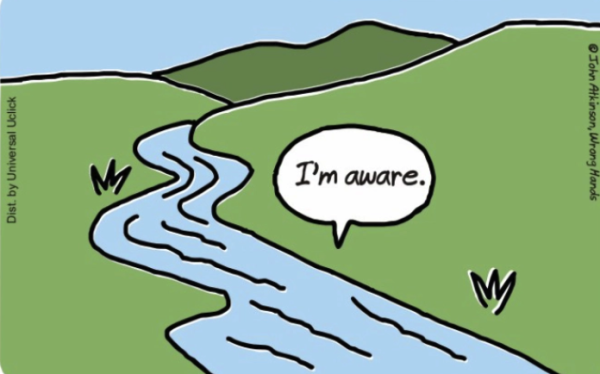From Cornerback to Concussion: A Call for Help throughout the NFL
It was a rare clear night at Paul Brown Stadium as the Miami Dolphins geared up to take on the Cincinnati Bengals for the fourth week of Thursday Night Football. If you’d have gotten there an hour early, you could see him all the way from the nosebleeds: Tua Tagovailoa, Miami icon and Alabama legend, tossing warm-up routes to Tyreek Hill and Jaylen Waddle. It wasn’t apparent from the nosebleeds nor the sidelines that Tagovailoa had undergone a concussion in Week 3 from a strong Bills pass rush.
It was just a hard hit – all quarterbacks have ‘em sometimes.
Tagovailoa cleared concussion protocol somehow and, just four days later, he was on the field in Cincy, warming up his arm, but this time with a headache. It was a concussion, and it was clear as day.
But there he was on that field, and, from the very first snap of the game, Tagovailoa was doomed.
It didn’t take long for Bengals’ Josh Tupou to penetrate one of the weakest offensive lines in the country, bringing Tagovailoa down to the ground with such force that any football player without a concussion would’ve been seeing stars.
But Tagovailoa already had a concussion, and now he had two. Within a five-day span.
If you haven’t seen the video, Google it: Tua Tagovailoa concussion. I promise you, it’ll be the first result. Why? Because it’s one of the NFL’s most gruesome injuries caught on camera.
No blood, no bone, no puke, but, instead, fingers outstretched in every which direction, bending backward, forward, inward, outward as Tagovailoa raised them above his face. According to sports medicine doctor Brian Sutter, it’s called decorticate posturing. And it’s terrifying.
But the reality is: this isn’t the first time the NFL has put the health of their players at risk.
When most people think of an injury, they think of the blood, the guts, the open wounds, the slow-mo replays that show an ACL tear frame by frame, the Alex Smith’s and the Joe Theismann’s, but often forget the most prevalent injury throughout the NFL: the concussion.
You might’ve been subconsciously hoping to hear lung collapse or fractured vertebrae just because those sound more gruesome, but the reality is that concussions are way too prevalent throughout the NFL. According to Vox.com, NFL team doctors diagnosed more than 220 concussions throughout the 2019 season, and this data doesn’t include the astronomical number of subconcussive hits that will injure the brain in some way.
One concussion, and you’re likely fine. You follow the standard protocol, you sit in a dark room for a week, no phone, no reading, and let your brain bleed heal. Because that’s what it is: a hematoma in the brain.
But imagine not following standard protocol. Imagine playing a game of football on that concussion four days later, and you’re imagining yourself as Tua Tagovailoa.
News flash: it’s not good for you. It’s not good for anyone.
Frankie – we get it. Concussions are bad, but why does it matter if it’s repeated? If we follow the protocol, if we let them heal, why does it even matter at all?
Three words: Chronic traumatic encephalopathy.
CTE is recognized by the Boston University Research Center as “a progressive degenerative disease of the brain found in people with a history of repetitive head impacts.”
Hey! That sounds like football!
Bingo. And it’s often found in athletes, most notably hockey and football players, and military veterans (and, to be clear, CTE isn’t just found in professional athletes; it’s been found in high school and college athletes, as well). Concussive and subconcussive hits trigger progressive degeneration of the brain over time. Think about one of the most infamous examples of progressive degeneration in the brain: Alzheimer’s disease. That’s how bad CTE is.
It’s preventable, but not prevented well by the NFL.
The symptoms of CTE can occur well into retirement for some NFL players and consist of aggression, depression, suicidality, impaired judgment, and progressive dementia.
And it’s been found in the brains of over 320 former NFL players, according to the New York Times. And if you still see no relationship between CTE and the NFL, here’s one name that every football fan knows: Aaron Hernandez.
He was 27 when he committed suicide within his jail cell, where he was serving a life sentence for murder. Aaron Hernandez had stage 3 CTE, which has never been found in a brain younger than 46 years old, head of BU CTE Center’s Ann McKee reported.
Phillip Adams. Played 20 years as a cornerback for the Raiders, the Seahawks, and the Jets. Killed his wife, his two grandchildren (age 9 and age 5), two HVAC technicians, and his physician, then himself. Stage 2 CTE, according to ESPN.com.
Jovan Belcher. Kansas City Chiefs. Father to a three-month-old daughter. Shot his 22-year-old girlfriend, then himself. An estimated Stage 2 CTE, according to CNN.com.
Demaryius Thomas, Junior Seau, Andre Waters, Dave Duerson… the list goes on. 99% of all NFL players surveyed posthumously show signs of CTE.
We cannot sweep it under the rug anymore. It’s not fair to the players who struggle out of the spotlight. It’s not fair to their mothers, fathers, sisters, and brothers.
The NFL has a net worth of over $4,000,000,000, and you’re telling me that they can’t figure out something, anything to lower concussion rates and head injury throughout the NFL? It takes one Google search to see that the football helmet hasn’t really changed since the 1970s, and it’s embarrassing.
We need a change and soon in order to save the next generation of the Pop Warner boys and girls, the walk-ons, and the Heisman hopefuls.
Edited by Presley Tsang


